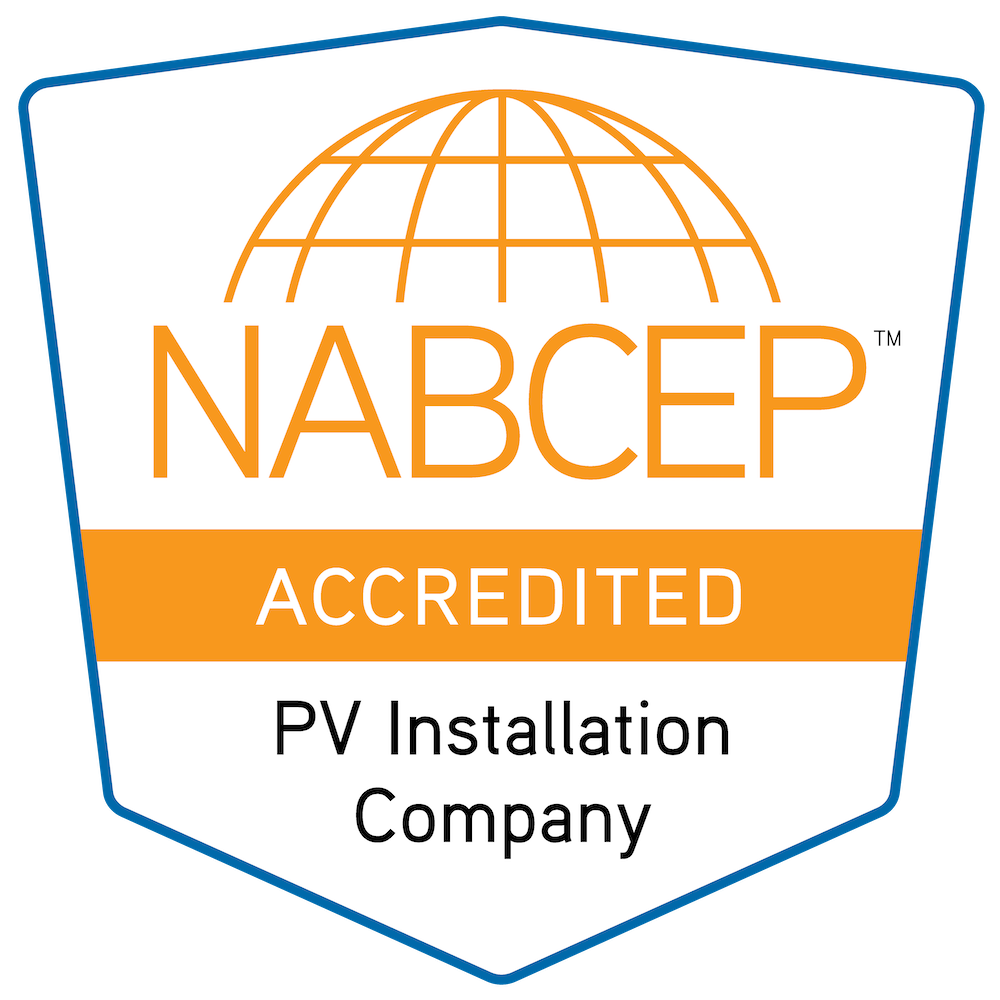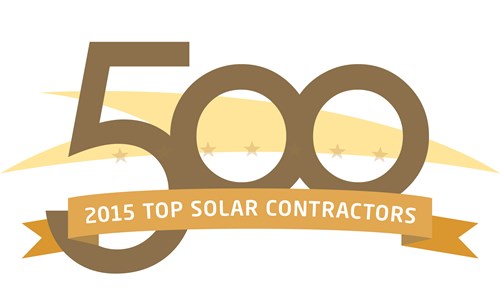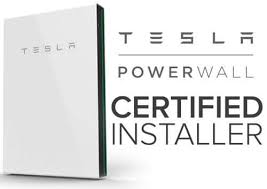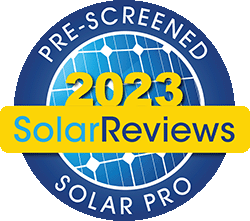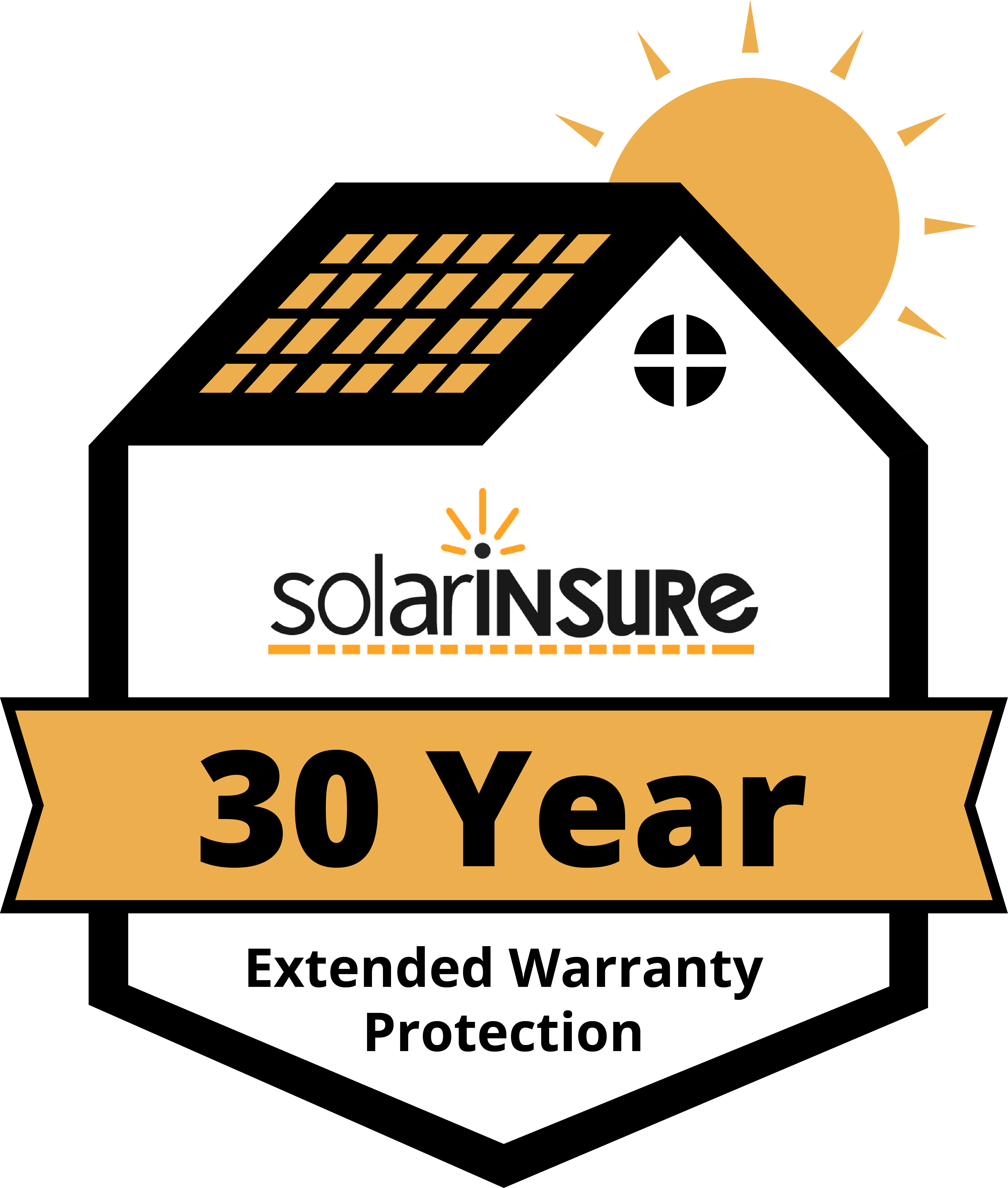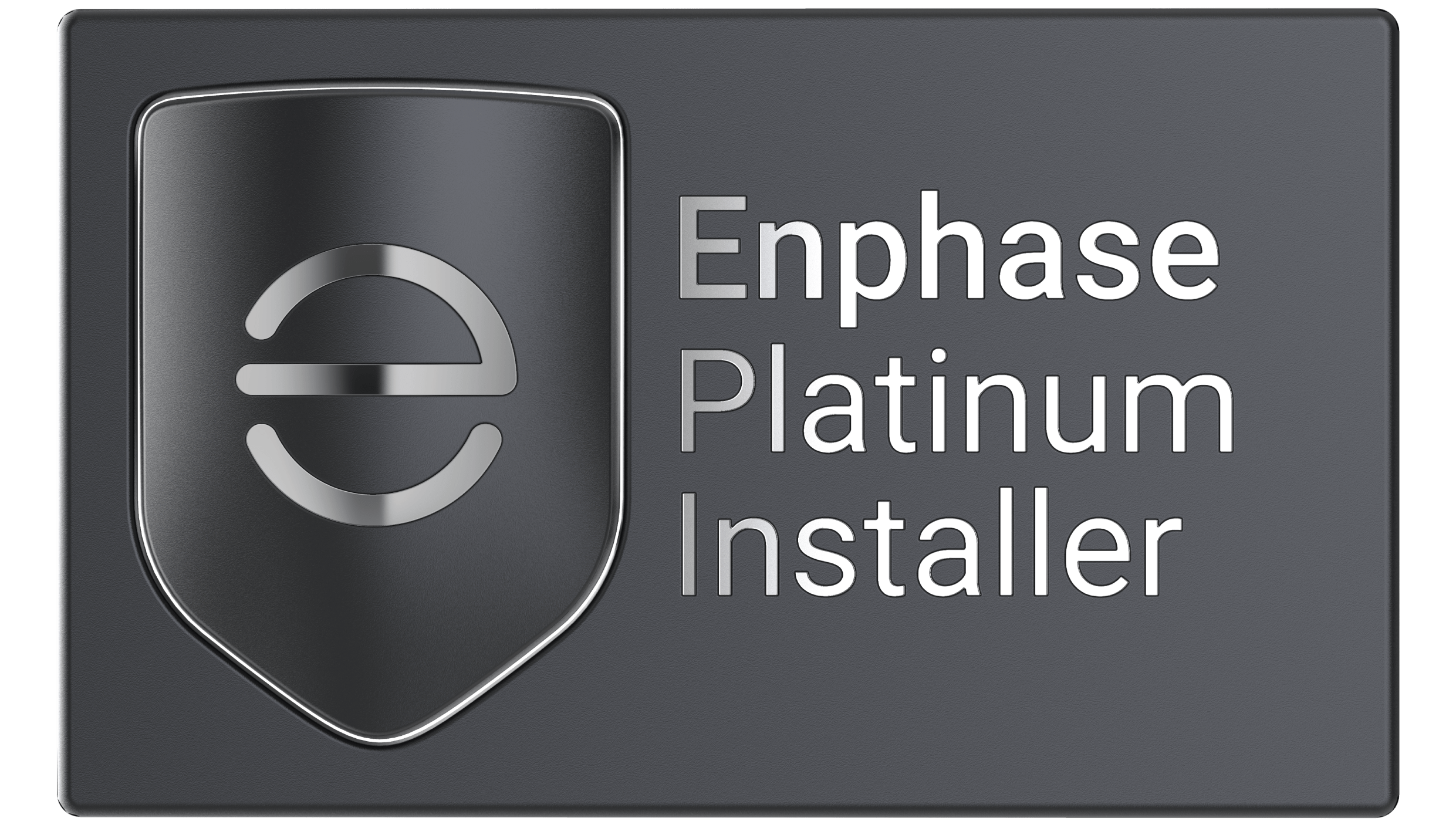Choosing a Solar Contractor

by Pete Wilking, President/Founder of A1A Solar Contracting, Inc.
When I got into the solar contracting industry in 2007, it seemed to be driven by sales, innovation, growth and market share. Solar is still a young industry with many great choices for solar panels, inverters and batteries (energy storage)…the best I’ve ever seen. As for the contracting side of the business, it has been a rough road for both business owners (with many bankruptcies) and also for many customers with improper system designs and/or inaccurate (or outright misleading) data in sales pitches, leaving many people skeptical of the whole industry. Yes, the solar industry in this journey has had its share of fails, just as other industries have. The good news is that most “mainstream” solar equipment sold in the US via major distributors are very well vetted, reliable and come with impressive OEM warranties. The bad news is that despite the great equipment available, an inexperienced and/or unethical solar contractor (or sales rep) can set unrealistic financial results, or — even worse with a poor installation — cause thousands of dollars worth of repairs/corrections if mechanical and electrical work is not up to current industry standards.
Having been a locally owned and operating solar contractor, we’ve seen just about everything. Anybody knows when hiring a contractor, performing due diligence is necessary and you should not rely 100% or outsource this task to the sales rep as they have both bias and financial incentive. The old saying of “trust….yet verify” can save you from making a big mistake.
Fortunately, everyone has multiple online tools to check company reviews, BBB, social media and even ask for customer references new and old. A long standing good reputation company generally will provide a lower risk to a buying customer. Brand new companies pose a higher risk as well a very large companies that grow quickly and likely have high staff turnover and a shortage of expert staff. Both publicly traded solar installers and private equity-owned companies are under tremendous pressure to show sales growth and earnings for shareholders. This is sometimes at odds with installation quality and customer service. This is where a local, reputable and credentialed contractor can reduce the “project risk” for a customer and not be a guinea pig or just a “work order number” to some faceless company.
Solar contractors can be structured in a few ways:
- The “insourced” model where sales staff and installers work for that company (as is the case with A1A Solar).
- The “outsourced” model where either the selling function or installation function (or both) are outsourced to a third party.
As you can image, there is much that can go wrong when a company does not have direct control of the sales team and/or the install team. Should a problem occur, the customer may not be well served with all the finger-pointing between entities. Sometimes it may not be easy to determine if a company outsources either function, so thorough due diligence is very important… even so far as visiting the company offices unannounced to see how they run and finding out who the owners and contractors are and where they are headquartered.
Other snags to be careful of are financing options. People pay for solar project generally in three ways: cash, loan or lease. Each has pros and cons. Most solar contractor offer on-the-spot financing (unsecured) with many choices of terms and interest rates. Most of these loans come with sizable “dealer fees” that are added to the project on the front end. Even with financing, it is always a good idea to ask what the cash price is so you can make an informed financial decision. As the IRS provides a 30% tax credit (and other incentives for commercial projects), in most cases you need to have a tax liability to use this tax credit, so knowing the amount you owe in taxes can be important.
A1A Solar Contracting, Inc. was founded in 2010 with the mission to accelerate the adoption of renewable energy for our customer base with correctly designed and expertly installed systems at a fair price with ethical practices. In our 13 years, we’ve installed over 2,500 systems. We are proud to have many NABCEP-certified (nabcep.org) employees, and A1A Solar has also achieved the most prestigious NABCEP Company Accredited status. This is a rigorous qualification that took over 5 years to attain, a distinction we share this with only 6 other solar companies nationwide.
If you have considered exploring the idea of going solar for your home, business, or not-for-profit and have not had a professional and ethical solar evaluation, please schedule a meeting with our no-pressure consultants to get the facts. Booking a meeting is easy… just pick a day to get your quote.
Thank you for your trust in A1A Solar Contracting, Inc.
How Much Money Will Solar in My Home Really Save Me?

Over the past two decades, solar power technologies have grown exponentially in both their share of the energy market in the United States, and in terms of their efficiency and performance in converting sunlight to usable energy.
As solar technologies continue to evolve, the cost of panel manufacturing has also gone down. With greater energy generation potential and a lower cost of installation, the financial benefits of switching to solar have continued to grow for both homeowners and businesses.
Solar power is now viewed not merely as an energy upgrade, but as an investment that promises to pay long-term dividends. Still, homeowners researching their solar power options are eager to know exactly how much this investment can lower their utilities bills, as well as how long it will take to recoup their investment and turn a profit on their solar energy setup.
Read on for answers to common questions about the financial benefits of installing solar panels for your home.
How Much Will a Solar Panel for Your Home Cost?
Although the specific cost of a solar panel installation is unique to every home, installation for a typical home will range between $15,000 and $25,000, before any tax credits are applied.
This cost can go up or down depending on the number of solar panels required for your home, as well as the installation surface. If solar panels need to be outfitted with supports that angle them and orient them for maximum sun exposure, for example, this will cost more than if the solar panels can be installed directly onto your home’s roof.
If you are estimating the cost of a solar panel installation, your electricity bill may offer some insight into your electrical needs and the number of solar panels your home will require. Ultimately, the best way to estimate the cost of installing solar panels for a home is to request a free assessment from a solar installation company.
Are There Tax Breaks if You Buy Solar Panels for Your Home?
When calculating the cost-effectiveness of installing solar panels, the tax credits and grants available to homeowners can have a significant impact on the up-front cost of installation, as well as how quickly you can earn your money back.
Currently, the federal government offers a 26 percent tax credit off of the cost of installing solar panels on your home. Unlike a tax deduction that reduces your total taxable income, this credit is essentially a payment applied to your tax bill. If you spend $20,000 to install solar panels on your home, for example, you will be eligible for a $5,200 tax credit when you file your income taxes, resulting in a net installation cost of $14,800.
Keep in mind that government tax credits are always subject to change. Research the latest information regarding federal tax credits and other state and local credits and grants that can further defray the cost of your solar panels.
How Much Can Solar Panels Save You On Your Energy Bill?
In terms of the energy savings created by installing solar panels, there’s good news for homeowners: a properly installed system could supply most, or even all of your home’s energy needs, depending on your location’s available sunlight and your home energy usage.
A solar panel installer can give you a more accurate estimate of how much power you can get from your solar panels, but it may be helpful for homeowners to calculate a potential range of energy consumption powered by solar energy: Assume that, on the high end, 100 percent of your energy bill will be covered by solar power, and that on the low end you’ll offset your energy expenses by 75 percent.
With this range in mind, you can calculate how much you might be able to save every month.
How to Calculate Your Break-Even Point
Once you know—or are at least able to estimate—how much of your home’s energy can come from solar energy, you can then calculate a breakeven point for your solar panel investment.
Assume, for example, that your average month of energy usage totals about $150, and you expect to generate 100 percent of your home’s energy needs through solar power. This means you will be cutting out $1,800 in annual energy expenses. If you take the after-tax installation cost of $14,800 mentioned above, and divide it by $1,800 in annual energy savings, your home can recoup its solar power investment in a little over eight years.
Around 10 years—give or take a few years—is becoming a reliable forecast for breaking even on solar panel investments. Meanwhile, your home also benefits from increased property value thanks to your solar technology, which means you could reap even more profits when it comes time to sell.
Ready to get some hard numbers estimating the installation cost, energy savings, and long-term value of solar panels for your home? Request a free consultation and quote today.
Do Solar Panels Work on Cloudy Days?
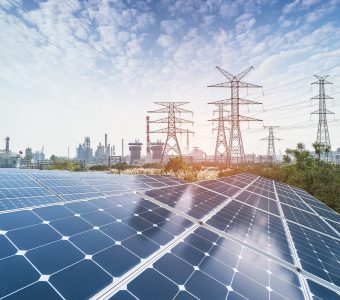
Ever wonder how do solar panels work on cloudy days? The answer is they can, but not as efficiently as when there is full sun. So those of you in cloudy climates can still benefit from solar power. We’re going to take a look at how clouds affect solar output, and which solar panels are best for cloudy conditions.
Do solar panels need direct sunlight?
We won’t go into the technical details, but solar panels need sunlight to generate electricity. The panels are built to react best to direct sunlight, but they also work in indirect light. If part of the panel is partially shaded or its cloudy outside, less sunlight is directed to the panel, so solar panel efficiency goes down on a cloudy day.
The average amount of direct sunlight needed for solar power is four to five hours during the day. From the hours of 10 am to 3 pm, the sun is at its most direct angle to the earth, so those are the best hours for harvesting sunlight. Depending on your location and the angle of the sun, you may be able to have less sun and still generate enough power. An expert can help you determine the best system for your needs.
Solar panels work at approximately 10 to 25% of capacity when it’s cloudy. The ultimate efficiency depends on the amount of cloud cover, the grayness, and the overall efficiency of the panel.
If you know your environment is prone to cloudy conditions, you can install added microinverters to help improve the efficiency of the panels during cloudy days. Microinverters work like Christmas lights: even if one panel isn’t working, the rest will stay operational, generating electricity where there is enough light. This keeps your system operational on partly cloudy days or when objects create shade on the roof.
You can also install panels in other locations besides the roof where more direct sunlight is available, even if it’s on the ground or on the side of your house. By moving the location of the panels, you allow the panels to be more flexible in searching for sunlight. Motorized panels can move according to the sun’s path to maximize solar exposure and power generation. And don’t worry about panel durability. Today’s panels are tested to sustain large hailstorms, winds, and lightning.
How do clouds affect solar power output?
Solar panels are designed to work in both direct and indirect sunlight. So, while clouds do affect the efficiency of solar panels, they do not stop power production. This means they can create power even during a cloudy day. Panels are most effective in direct sunlight and when that light isn’t available efficiency goes down.
Surprisingly, rain and snow are both good for solar panels, as they help remove dust and dirt from the panel surface. An occasional rain shower helps maintain your panels, keeping them clean so they generate the most power they can.
Best solar panels for cloudy conditions
To choose the best solar panels for cloudy climates, look for panels with higher low irradiance test data. This data will show how much energy a panel creates even at lower light levels. Not many manufacturers provide this information, so you may have to shop around.
If you can’t get irradiance test data, the next best thing is to choose the highest efficiency solar panel you can afford. That way you get the best production you can for your budget, even in cloudy conditions.
Another choice you can make is to choose monocrystalline rather than polycrystalline panels . Monocrystalline panels are more efficient and technologically advanced. Polycrystalline panels are more affordable and have a longer lifespan but aren’t as efficient.
Conclusion
Solar power can still be an option, even in cloudy conditions. Solar panels don’t work as efficiently in lower light conditions, but you can still generate some power during the day to help offset your needs in the evening.
If you’re considering solar power for your home and aren’t sure if the conditions are right in your area, contact us at A1A Solar and we’ll assess your site for shading and climate conditions and let you know the best options for your home. Contact us today.
Solar Energy: Pros and Cons

You may be wondering if the investment in solar power is worth the money. Solar power technology keeps improving every day and prices keep falling. This makes solar a great choice, but there are some limitations of solar energy you should consider before making this investment.
Advantages of solar energy
Free power
How does solar energy save money? Once the equipment is purchased and installed, you get free power for the life of the system. That could be up to 40 years for some solar energy panels. And, if you live in a net metering state, you can sell any excess energy you create back to the power company. This means you could actually earn money creating solar power.
Solar works in different weather patterns and climates
Solar energy panels generate power even when the sun isn’t directly shining on them. Clouds and other weather patterns lessen the efficiency of the system, but the panels are designed to generate power in indirect sunlight. Panels can be installed wherever the best sun exposure is available, even on the ground. Although, they perform best on south facing roofs with a slope between 15 and 40°.
Solar is affordable
Today’s solar power systems cost between $15,000 and 25,000, depending on the size of the system and whether batteries are included. However, prices are dropping every day as panels become more efficient and less expensive to manufacture. Plus, there are incentives available to purchase solar energy, which we’ll talk about below.
Long panel life
Solar panels have a useful life of 25 to 40 years. Most systems break even due to utility bill savings between years 6 and 10 , meaning the rest of the time the electricity is free or you’re being paid for it by the utility in net metering states. A typical household could enjoy up to 30 years of free power by investing in solar.
Increased home value
Solar panels are seen as upgrades, like a new kitchen or bathroom, when houses go up for sale. A recent study showed this could add up to $15,000 to the value of your home, and speed up the selling process, as homes with solar power tend to sell faster.
Benefits of solar energy to the environment
Up to 28% of emissions are from generation of power . Solar power doesn’t consume resources to generate power and is renewable as long as the sun shines. According to the Office of Energy Efficiency & Renewable Energy, using solar energy minimizes the amount of carbon and pollutants generated. That means we’ll have cleaner air, fresher water, and better environmental health for future generations.
There are incentives
As if these reasons weren’t enough, there are tax incentives available for solar power systems. US federal tax credits are available for up to 26% of the costs of a solar power system. For example, if you install a system for $15,000, you would be eligible for tax credits of $3,900. There are also many state tax incentives available. DSIRE is a website that provides up to date information on incentives and policies that support solar power in the US.
Disadvantages of solar energy
No solar energy is generated at night
During the night and extremely dark, cloudy days little to no energy is generated. To offset this lack of generation, you can install batteries to store power until you need it or connect to the power grid and use net metering to draw power when needed.
Solar panels don’t match house decor
Several years ago, solar panels were not an attractive addition to any home. They stood out like a sore thumb on the roof. But with improving aesthetics and low-profile panels, you can hide even the largest system and hardly anyone will know it’s there.
Not every roof is configured for solar panels
Not every house and roof have the ideal slope facing in the ideal direction for maximum sun exposure. Solar panels need adequate sunlight to generate power, although the level of light required is being reduced as panels improve in efficiency. If the house or roof is not located in the best place for solar access, panels can be installed on the ground or other areas where exposure is better. Also, installing a battery storage system can help store power when there is good solar access, storing it so it can be used later on when there is not.
Disadvantages of solar energy to the environment
The process of manufacturing solar panels releases greenhouse gases into the environment. In addition, there is no readily available way to recycle a solar panel once it’s past its life. However, new manufacturing techniques and technology have reduced the impact on the environment of the manufacturing process. According to a report from the Office of Energy Efficiency & Renewable Energy it takes only one to four years to pay back the energy expended during manufacture of a solar panel. That still leaves 30 to 40 years of active lifespan that does more good than harm.
High upfront cost
Solar panel system can cost as much as $18,000 for a 6-kW grid tied system. When seen as a long-term investment that may be paid back in 6 to 10 years, it’s not as big a cost as it may seem. In addition, homeowners are eligible for tax credits and other incentives from the federal and local governments. All of this helps offset the initial investment, making it much easier to swallow. That being said, if you don’t plan to be in your home that long, it may not be a wise investment.
Conclusion
Solar energy is a good investment for most households, especially in sunny climates. While you may have to spend some money up front, the benefits in the long run outweigh the costs. There are tax incentives, local rebates, and free energy to look forward to. Don’t underestimate the economic importance of solar energy when shopping for a system to meet your budget.
How Long Do Solar Batteries Last?
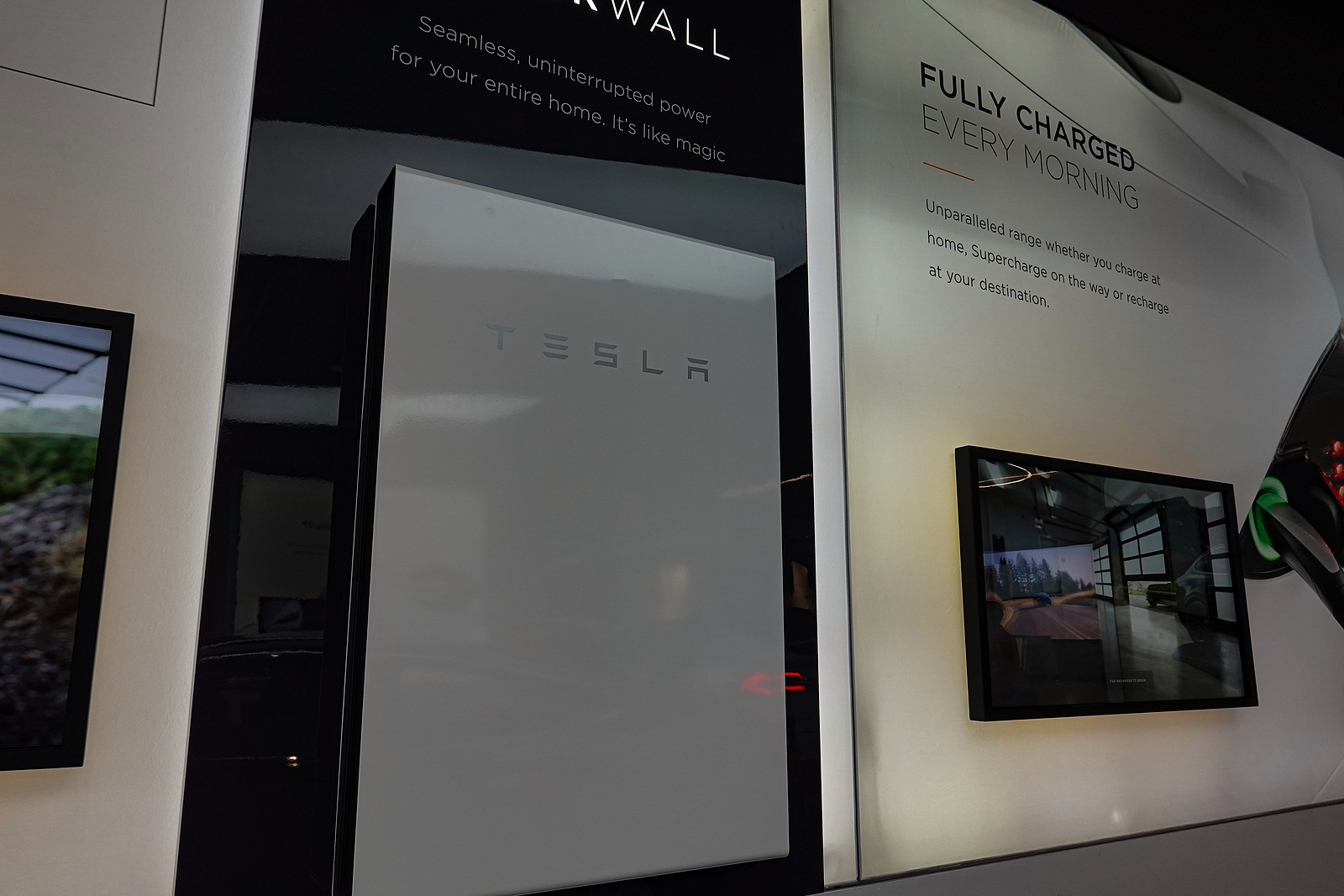
Imagine having a solar system installed on your home that you rely on for all your electrical needs, but you have a stretch of overcast days leading to reduced energy output. Many of your appliances run continuously, like your refrigerator and computer, so having a battery backup for solar panels, which stores excess energy your solar system generates, can help keep these appliances running without interruption.
With solar batteries, you’re able to store the energy your system generates for later use, which means you’ll have backup power if the utility grid experiences an outage (if you’re part of a grid) and if you’re off-grid, you’ll be able to have consistent power. Solar batteries are a significant investment, so it’s natural to wonder how long do solar batteries last?
How Long Do Solar Batteries Last?
Typical solar batteries have a lifespan of five to 20 years. Some manufacturers match the lifespan of a modern solar system, promising 30 years. Replacement solar batteries are readily available and easy to install. Due to the high quality of solar batteries nowadays, you may only need to replace them once or twice throughout the lifespan of your solar system.
There are four factors that can affect the battery life, including:
- Charging Times – Charge the battery according to its specifications — type, size, model — to maximize the potential for your battery.
- Maintenance – Follow manufacturer’s instructions for proper care and maintenance. Consider having a professional maintenance service check your battery periodically to ensure it’s running efficiently.
- Temperature – The climate in which you live can affect the lifespan of your battery. If you’re in a location that experiences moderate or mild temperatures, the battery can be installed outside and still perform well. However, if you live in a warmer climate with extreme temperatures, it’s wise to have your battery installed in the basement or garage for optimal performance.
Usage Cycles – The usage cycle refers to the number of times the battery is discharged and recharged. This cycle can have a significant role in ensuring good life expectancy. Most solar batteries are deep-cycle batteries, which can discharge approximately 80 percent of their stored energy before needing to recharge.
Different Types of Solar Batteries
Now that you have a better understanding of how long solar batteries last, it’s time to determine what type of solar battery to invest in. There are four different types of solar batteries currently on the market:
- Lithium-ion batteries
- Lead-acid batteries
- Nickel batteries
- Flow batteries
Lithium-ion batteries are primarily used in solar battery systems and are also used in electric cars, laptops, tablets, cell phones, and other portable devices that are widely available today. These batteries are efficient, compact, lightweight, and have a longer lifespan than other battery types.
How long do lithium batteries last in storage though? These batteries lose their charge (self-discharge) over time even when not in use. In the first 24 hours, they self-discharge five percent and then 0.5-2% per month after. If stored properly, in a cool, temperature-controlled area, away from other batteries and metal objects, they can last approximately three to six years.
Lithium-Ion Solar Battery Banks
Solar battery banks store solar energy for your home and provide backup power when a utility power outage occurs. Companies like Tesla and Generac have brought products like the Powerwall and Power Cell to market as total home battery options for homeowners. Both systems — Generac PWRcell and Tesla Powerwall — use lithium-ion batteries.
Generac Power Cell vs Tesla Powerwall
Generac PWRcell
Generac, while not a solar company — they don’t have a solar panel or solar shingle — has specialized in backup power for 60 years. The Generac Power Cell, also referred to as the Generac PWRcell, is like other batteries that are on the market currently and even uses the same lithium-ion phosphate technology that Tesla and other solar battery system manufacturers use. The main difference is the way the PWRcell is designed.
The PWRcell is designed to be modular and scalable, unlike other battery options. It has one battery cabinet that can have six individual battery modules inside. This setup allows you to customize your PWRcell based on your home’s specific backup power needs, setting priorities for your PWRcell.
The PWRcell is installed in tandem with a solar system on your home. If you don’t already have a solar system installed, the Generac PWRcell is a good option because it’s all one system, allowing homeowners to have a seamless battery and solar product by utilizing the PWRcell and Generac-branded inverter.
The PWRcell can be installed outside your home or inside a garage or mechanical room. They come with a standard 10-year, 70 percent warranty, meaning after 10 years the battery is guaranteed to still perform at 70 percent of its original performance.
Tesla Powerwall
The Tesla Powerwall is one of the highest density battery storage solutions for residential and light commercial AC (alternate current) battery storage. The Powerwall is different from other battery storage options on the market because it can support larger loads, meaning you can power up more of what you need. The Powerwall can be installed with a new solar system or retrofitted to an existing system. Like the PWRcell, the Powerwall can be installed inside or outside.
This rechargeable lithium-ion battery can maintain a 10 percent reserve so when the power goes out, the battery has enough energy stored to keep a few lights on, keep your freezer from defrosting, and power a few other essential appliances. The Tesla Powerwall lifespan is five years beyond its 10-year warranty.
A single Powerwall has enough energy to cover your emergency circuits, lights, and outlets in the occurrence of a power outage. If you want to power more in your home, like larger appliances or an HVAC unit, two or three Powerwall units would be advised.
Are Solar Panels Worth It in Florida?
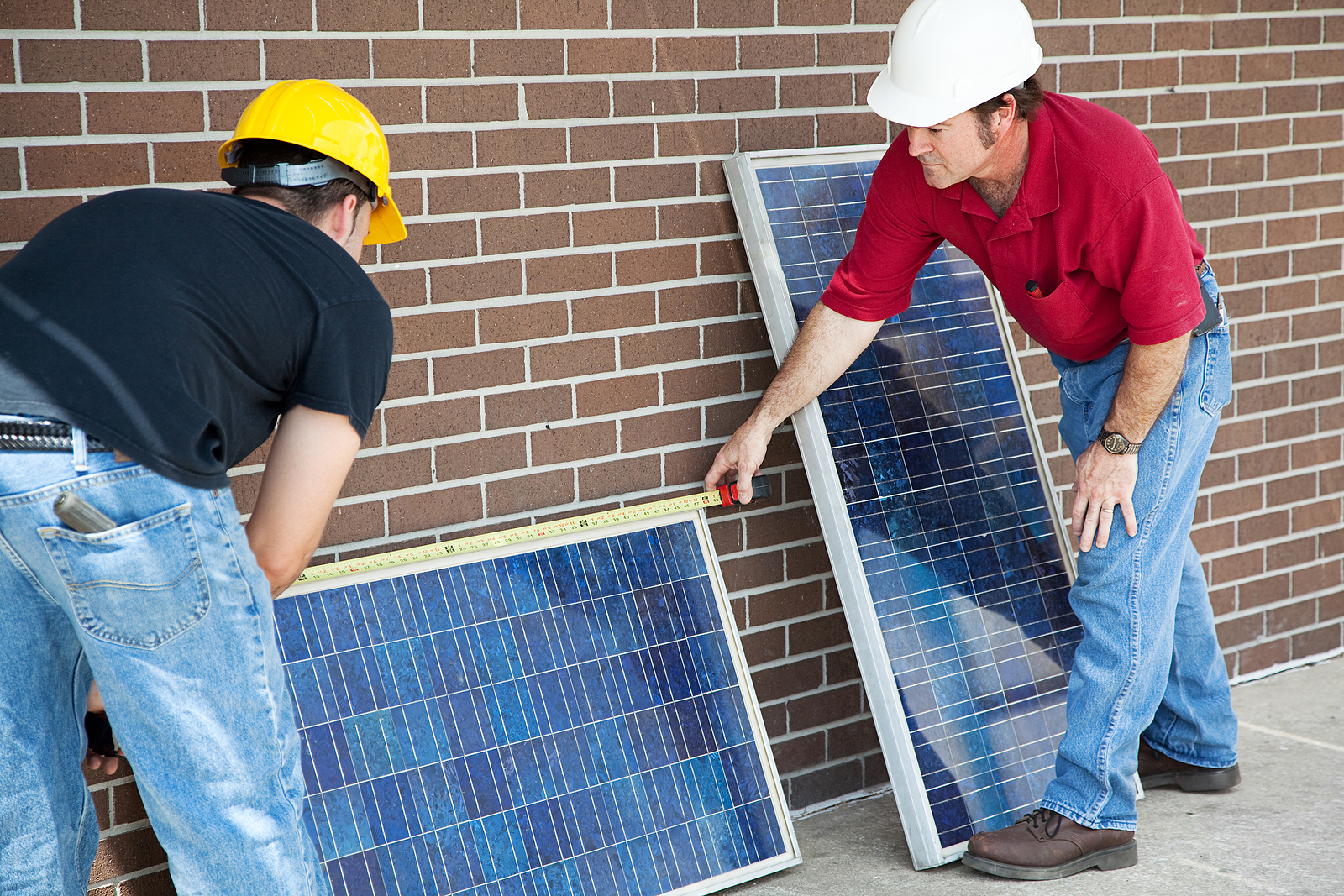
The sun is one of the most important sources of energy. Through a variety of technologies, like solar panels, the energy from the sun is harnessed and converted to a useful form of energy for homes.
It may seem obvious for someone who lives in a warm, sunny climate to invest in solar panels, however, there are many factors to consider when determining if you want to make the switch to solar, such as the cost, the weather events you experience, which system is best for you and the environmental benefits, among others. So, are solar panels worth it in Florida?
Solar Panels and How They Work
Did you know that in just one hour, the amount of sunlight that hits the surface of the earth is enough to handle the energy consumption of the entire world for one year? Solar panels and systems convert that sunlight into electrical energy. This can be achieved through either photovoltaic (PV) panels or mirrors that concentrate the solar radiation. Then the energy can be used to generate electricity or stored in solar batteries.
You may be wondering how solar panels work. Your initial searches might have looked something like this, “What is a solar panel, and how it works?” It all starts with the sun. As a natural nuclear reactor, the sun releases photons, tiny packets of energy, that travel 93 million miles to Earth in approximately eight and a half minutes. For homes and buildings that have solar systems installed, the photons reach the panels and are then absorbed and stored, turning into useful forms of energy for your home.
Why Is Solar Energy Good for the Environment and World?
So why should you consider using solar energy? There are numerous environmental benefits to using solar energy, not to mention using solar panels for electricity can help reduce your overall cost of electricity! Below are five environmental benefits to using solar power:
- Less water usage – Solar doesn’t rely on water to produce electricity, unlike traditional electricity production which can use thousands of gallons of water each year to cool generators, and process, refine and transport fuel.
- Decreases air pollution – Solar panels don’t produce any harmful gas emissions like carbon dioxide and methane, which are generated through the production of electricity from fossil fuels.
- Reduce reliance on fossil fuels – Fossil fuels are nonrenewable resources, meaning they will run out. By utilizing solar, a renewable resource, we can reduce our reliance on these finite fossil fuels.
- Reduces carbon footprint – Instead of relying on the grid for your electric needs, solar provides a clean and effective way to make your home more efficient and sustainable while reducing the amount of carbon dioxide that’s emitted into the air, thus reducing your carbon footprint.
- Decreases greenhouse gas emissions – Solar is one of the cleanest energy forms as it doesn’t emit carbon dioxide, ethane, and nitrous oxide into the atmosphere, unlike fossil fuels.
Not only is solar good for the environment, but it also is good for the economy as it:
- Contributes to a strong electrical grid
- Creates jobs
- Sparks economic growth
- Generates back-up power when paired with a solar battery for nighttime and power outages
Are solar panels worth it in Florida?
You may be wondering if solar panels are worth the investment. Below are seven reasons to consider installing solar on your home in Florida:
- Access to sunshine – If you live in a sunny climate, like Florida, which has on average 233 days of sunshine, solar panels are definitely something to consider due to the ability to harness the sunshine year-round. While Floridians don’t have to worry about snow covering their panels, cloudy days and decreased amount of sunshine during the day is common, but there are ways to prepare your solar system for such changes in the weather.
- No sales tax – The purchase of a solar system and solar battery, in addition to the cost of installation, are exempt from sales tax in Florida.
- No additional property taxes – Renewable energy home improvements, like adding solar panels to your home, are free of additional property taxes in Florida.
- Increased home value – Solar panels raise the value of your home, making it more enticing to buyers when you choose to sell. Solar panels can help sell your home 20% faster and help you earn 17% more at closing.
- Tax incentives – The Federal Solar Tax Credit is a rebate that offers a 26% tax credit for solar systems installed on residential/commercial properties in 2020-2022. The credit will reduce to 22% in 2023 and is set to expire in 2024 unless Congress decides to renew it.
- Sell your solar energy back – Taking advantage of net metering means that you can sell your excess solar energy to your energy company, so your monthly bills get credited. This requires your solar panels to be hooked up to a utility grid but will decrease your monthly electric bill.
- Energy independence – Installing a solar battery with your solar system allows you to store your excess solar energy for use during power outages, at night, or during extreme weather.
If you choose to have solar installed on your home, consider doing some research to have more information about the system and about companies near you. You can start your search broad by Googling “best solar companies in Florida” to see what your options are throughout the whole state. From there you can narrow your search by changing just a few words and searching “solar power companies near me” or “solar power for homes near me” to find installers closer to your location. Read through reviews from past customers to see how their experiences were.
How Many Solar Panels Do I Need for My House?

If you’re an aspiring solar homeowner, you might be wondering, “Can solar panels power a whole house?” The short answer is, yes. The longer answer is, your solar panel power output (kWh) needs to match your energy consumption to determine how many solar panels you need installed. Now you might be asking yourself “How many solar panels to power a house?” Continue reading to identify how panels your home will need.
Before we dive in, there are a few terms to understand:
- Watt (W) – how solar panels measure the power collected from the sun
- Kilowatt (KW) – the equivalent of 1,000 Watts
- Kilowatt hours (kWh) – unit used to measure the energy of a solar panel
- Kilowatt peak (kWp) – the peak power of a solar panel
Factors influencing how many solar panels you need
How many solar panels you’ll need to power your house will depend on:
- Size of your home and available roof space – Generally, larger homes consume more electricity, which then requires more solar panels. Bigger homes usually have more roof space for larger solar panel installations, if necessary.
- Peak sunlight hours – Each state has a different average amount of peak sun hours, which are hours that your solar panels will work at an optimal level. Solar panels work best in direct sunlight. When the sun is no longer shining, the panels are no longer producing energy.
- Your energy usage and household size – More people living in a household typically equates to using a higher amount of electricity. Looking at your monthly electricity usage will give you a better idea of how much power you’ll need generated by your solar system.
- Type of solar panel – There are three different types of solar panels: monocrystalline, polycrystalline and thin-film. Monocrystalline panels are the most efficient of the three. If you opt for high-efficiency panels, they can deliver more watts per square foot, meaning you won’t need as many panels to reach your target electricity generation.
How many solar panels do I need for my house?
An average home requires approximately 20 to 25 solar panels to cover its electricity usage. A solar system professional can provide you with a more accurate assessment for your home, but you can get an estimate for yourself if you know your energy consumption and how much energy is produced by your panels.
Household energy consumption
Are you wondering just how many watts to run a house? In a typical home, essential appliances will use about 5,000-7,500 watts of energy. However, kilowatt hours is a more common measurement used to determine energy usage in a household. That being said, the average annual electricity consumption in 2019 of a residential customer was 10,649 kWh, which is approximately 877 kWh per month. Your household electricity consumption could be more or less than the average though.
To determine your electricity usage, simply look at your latest power bill for your monthly usage, which is measured in kWh. Because energy usage fluctuates so much throughout the year, a yearly account of your energy consumption will give you a better estimate of how many solar panels you’ll need. To do this, find your electric bills for the past year and add them together.
How much energy does a solar panel produce per day?
The performance of your solar system is dependent on what kind of solar panels are installed on your roof. Solar panel wattage can range from 330 watts to 360 watts per panel. Other elements that determine how much total energy is produced by a single solar panel include solar panel size, amount of sunlight, panel material and solar panel efficiency.
Let’s calculate
Once you identify how many kWh of electricity you use, you’ll need to calculate how many kWh are produced by each solar panel during a year. A common metric used when estimating system capacity is “specific yield,” which refers to the amount of sunlight available in your location. The National Renewable Energy Laboratory has a solar radiation database that can provide you with the specific yield available where your home is located.
To estimate how many kWh are needed to run your house, use this equation:
Annual kWh consumption / specific yield per kW of solar capacity
For example, if your home requires 15,000 kWh of energy per year, and the solar panels have a specific yield of 1,500 kWh/kWp where you live, you’ll need a system size of about 10 kW.
Once you know your system size, check your panel wattage to determine how many panels to purchase. To do this, multiply your system size by 1,000 to determine watts, and divide by the wattage of each solar panel. Since the typical solar panel has an output of 330W to 360W, we’ll use the average, 345W.
Knowing that you need a system size of 10 kW and you find solar panels with an output of 345W, you’ll need to purchase 30 panels:
10 kW x 1,000 = 10,000W
10,000W / 345W = 28.9 panels
How much space is needed for solar panels?
Now that you know how many solar panels you’ll need, the next step is to determine how much of your roof area is needed for installation. Since the standard solar panel size for residential properties is 17.55 square feet, simply multiply that number by how many panels you’ll need.
Taking our example from above, you’ll need approximately 527 square feet of roof space to install your solar system:
30 panels x 17.55 square feet = 526.5 square feet
If you’re working with limited roof space, high-efficiency solar panels allow you to install fewer panels while still having your energy needs met. Solar panels can also be installed on the ground, providing more flexibility in terms of being able to adjust them and because you don’t have to worry about working around obstructions like chimneys or skylights.
Why Do Solar Cells Need an Inverter?

Solar systems are complex and have more components than you might think, and each part is crucial to the success of your system, like an inverter. The efficiency of your solar system relies not only on how powerful your solar panels are, but also on your solar power inverter.
But why do solar cells need an inverter? Many homeowners are unaware that solar panels produce a form of electricity that’s unusable for their homes, which is why an inverter is needed.
So, how does a solar inverter work?
Solar cells need to convert the energy harnessed from the sun to a usable type of electricity, a process known as inverting because it’s taking one form of energy and changing it to another.
Modern appliances rely on alternating current (AC) electricity, but electricity from solar panels comes out as direct current (DC) power. The DC power is converted to AC electricity so you can have light when you turn your lamps on and binge your favorite Netflix show on your television.
You might be wondering, “Can a solar panel work without an inverter?” Yes. While most home appliances rely on AC power, some can be powered with DC power, like your cellphone and laptop. If most of your appliances run on DC power, then you don’t have a need for an inverter. If this is the case for you, you would be able to connect your solar panels directly to a DC-to-DC converter, or a charger controller, that produces 12-, 24- or 48-volt DC as its output. This is common with off-grid setups.
Types of solar inverters
There are several solar power inverters for homes currently available on the market, including:
String (central) inverters
This type is the oldest and most common inverter used today. They connect a string of solar panels to one inverter, like holiday lights. Having been on the market for decades, string inverters are reliable and are the least expensive option. This type of inverter is easily accessed since it is centrally located on the side of the house, allowing you to monitor, repair or replace the inverter with ease. It’s important to think about your solar inverter placement because you want it to be in an area that’s moisture resistant, away from direct sunlight and has proper air ventilation to keep your system working optimally.
While reliable, string inverters aren’t as efficient at optimizing solar energy output. This inverter is connected to a string of solar panels, hence the name, meaning that shade on one solar panel will stop the power output of the rest of the string. Since multiple panels are connected in one string, you are provided with total-system monitoring, which can be a hindrance if you want to be able to diagnose issues with individual solar panels.
Power optimizers + inverter
Located on the back of each solar panel, power optimizers work with a string inverter to convert DC to AC. They can condition the DC electricity produced by each individual solar power, meaning that if one solar panel is shaded a bit, it won’t diminish the output of the entire string of panels. Power optimizers also have the capability of system-level monitoring and panel-level monitoring because of the string inverter, meaning you can easily diagnose any solar output issues since each solar panel can be monitored individually.
This is a more expensive option and requires additional power optimizers. And if you choose to expand your solar system later you would need to add more string inverters. Since power optimizers are on the backs of the solar panels, it means your access to them is on the roof, which makes it more difficult to repair and replace them if any issues arise.
Microinverters
Microinverters can convert DC to AC directly from the back of each solar panel. This type of solar power inverter for homes doesn’t require a string inverter since each microinverter takes care of the conversion of each panel. If shade covers one of your panels, only that panel will produce less without affecting the output of the rest of the panels. They also allow for you to easily expand your solar system should you want to in the future. Microinverters, like power optimizers, allow for panel-level monitoring so you can diagnose issues easily.
This is the most expensive inverter available, but is a great solution if shade is an issue on your roof. Since microinverters are installed on the back of the solar panels, repairs and replacements can be more difficult since the only access to them is on the roof.
The best solar inverter for a home will depend on the features you need from your solar power inverter and how you intend to use the energy from your solar panels. Solar inverters are one of the components that tend to fail first in a solar system, so it’s a good idea to check them often and invest in one that will last you a while. And if you have an RV, van, or tiny home, you might consider adding a solar inverter charger to your solar system installation to fulfill your energy needs.
What is a solar inverter charger?
A solar inverter charger is a more advanced version of a standard inverter. Inverter chargers can not only turn DC to AC, but they can charge a battery bank when shore power is available, ensuring you have constant access to energy, which is convenient for areas that don’t get enough sunlight to charge your battery bank. An inverter charger is handy if you:
- Live off grid but still have access to shore power
- Need supplemental energy or live in a cloudy area with less direct sunlight hours
- Want a backup power solution
An inverter charge fills the batteries when they’re low and stops the electricity generated from the panels from reaching the batteries when they’re full.
Solar Myths

You’ve probably seen solar photovoltaic (PV) panels popping up on rooftops all over Northeast Florida, and wondered whether or not solar really works. There are a number of popular misconceptions about solar power, and often when we speak to prospective clients, they have heard some myths. Coal companies, oil companies, and utilities are more than happy to have their customers keep believing in these myths, and solar companies around the country are working hard to dispel these distortions.
A1A Solar Contracting is the leading solar contractor in our region, with hundreds of happy customers who have experienced first-hand that solar is a fantastic financial decision.
1: My HOA won’t allow solar
Homeowners associations can be a bit scary, for they do wield a great deal of power when it comes to modifying the exterior of your home. They can dictate the length of your grass, the colors you are allowed to use, and what trees you have in your yard. Furthermore, they can place a lien on your home and impose significant fines for non-compliance. For this reason, one of the first questions homeowners always ask is “what about my HOA?”
Homeowners associations are not legally allowed to prevent you from placing solar on your roof, and they know it. In fact, if they take legal action, by federal law, the HOA will be on the hook for your legal fees. The associations are typically very easy to work with when it comes to getting your solar project approved. A1A Solar will handle this process for you, working on your behalf to obtain the HOA letter. We typically avoid placing panels on the front of a home located within a community that has homeowners association; we will do so at the customer’s request, but only if it makes a significant difference in the system’s production.
2: Solar requires a great deal of upkeep and maintenance
PV solar is astonishingly easy to maintain, since there are no moving parts. Solar arrays are built to withstand extreme heat and weather, including hurricanes and hail. The only upkeep required is to keep the panels free of debris and dirt. Typically the panels should be cleaned about once a year. Pollen tends to be the biggest factor in our area, which will accumulate in the spring and decrease panel efficiency.
Cleaning takes almost no time, using a soft-bristle RV brush and a garden hose. If you don’t feel like bothering with the cleaning, you can always call A1A Solar, and we can put you on our cleaning schedule for a small fee.
3: Installation presents a big hassle
Our average install takes only about three days, from start to finish, including the necessary electrical work. We handle all of your permitting with the municipality, the utility company, and the HOA. We schedule our installations in advance, and will work around your schedule to make the install go smoothly.
Installs are hassle free, and our crews are all composed of A1A employees because we do not subcontract any work. This means that you can expect excellent customer service and professionalism at every phase of your installation, from your consultation with a sales representative, to your interactions with our office staff and engineers, to the hard working men and women who will put the panels on your roof.
4: The monthly payments are too high
As soon as your array comes online following your meter-swap, you will notice a huge reduction on your electric bill. This means that while you are making a solar payment, you are only paying a fraction of your previous electric bill. The more panels you have, the greater the percentage of your electricity you will offset with solar.
A solar investment is essentially revenue-neutral during the first seven years, meaning your solar payment is roughly the same as what you are already spending on your electric bill. And as utility rates continue to climb, during the last few years of your finance period, you will likely be paying less with solar. Of course, after your system is paid for, you can look forward to decades worth of electricity for free. Our motto is “why pay for energy, when sunshine is free?”
FPL announced a rate hike that will go into effect on January 1, 2017. By going solar, homeowners can essentially freeze inflation in place, avoiding paying more for electricity in the future.
5: Solar doesn’t work when it’s cloudy
As long as the sun is shining, your solar array is generating power, whether or not it’s cloudy, rainy, or even snowing. UV rays penetrate cloud cover, and hit the panels as long as the sun is up. However, during extensive cloudy days, your system will not harvest as much energy as it will on clear days.
Our engineers use advanced software which includes weather-prediction data for specific areas, and our projections take historic weather patterns into account.
6: Solar is too expensive
When you compare the cost of what you will spend over the next 25 years on electricity with the cost of your PV array, you will see that solar represents a huge financial swing in your favor. The average homeowner will save between $40,000 and $50,000 over the life of a system, and this doesn’t include the significant additional monetary value solar brings to homes.
Prices have dropped over the last decade, efficiencies have increased, and utility rates have gone up. As an investment in your future, solar is far ahead of the stock market, money market accounts, or savings. A typical first year annual percentage yield (APY) is around 7%.
With the 30% Solar Investment Tax Credit, the federal government essentially pays for almost one-third of the cost of your system.
The most important thing to remember is that you are already spending the money on electricity; it’s not an option. Solar allows you to redirect the money you will spend with your utility company and invest it in your home, rather than squandering it every month with nothing to show for it.
7: Solar doesn’t work at night
While it’s true that sunshine is the most important component of a solar array, we sell “grid-tied” systems. This means that during the daytime, after your home’s electric needs are met, you are making more power than you actually use. The utility company will then sell that excess electricity to your neighbors, crediting you for it. At night, when you are no longer making power, you will draw back from the grid.
This process is called net-metering, and being connected to the grid means that no battery systems are necessary, because the extra electricity does not need to be stored.
8: Solar means I will be off the grid
Because most of the systems we sell are “grid-tied,” if the grid goes down, your array goes down with it. This is a safety measure to ensure that if utility workers are out restoring power and working on lines, the excess power your array would generate does not shoot back to the grid and electrocute a lineman. In the event of a power outage, you will not have electricity, and there is an additional safety measure required by the utilities in the form of a manual automatic disconnect switch that we install near your electric meter to make sure that our workers are safe.
If you’d like to have the ability to maintain electricity even when the grid goes down, we offer solutions. We sell battery-back-up systems which store the excess power your array makes during the daytime, and which you can pull from at night. And if there is a power-outage, all of the extra power flows to your battery rather than the grid. During the night, you can draw from your battery, and power most of your home’s needs, with the exception of central air or heat.
We also offer generators which we can install and wire to work seamlessly in conjunction with your PV array and battery; generators are a more affordable option, and make sense for homeowners concerned about short outages during hurricanes, rather than a long-term outage that happens because of a cataclysmic event like war.
9: I should wait for better technology and price drops
Prices have bottomed out, after significant reductions over the last decade. Since 2009, prices have come down 70% according to National Geographic, spurred by the federal tax credit and an influx of panels manufactured overseas. (A1A uses panels made in the United States.)
Soft costs have remained stable, and steadily increased along with inflation: the cost of trucks, install crews, electricians, and overall operating expenses will never go down. While panel efficiencies continue to increase incrementally, the overall price-per watt is highly unlikely to go down significantly in the future. Part of the reason for this is that large corporations and utility companies are building huge large-scale arrays all around the world, reducing supply and increasing the demand for panels.
The technology used in solar panels is mature, and the technology itself has changed little since the 1960s. The materials used have evolved, and the efficiency of panels has gone up, but when comparing those increases with cost of waiting to install solar, the economics of going solar now far outweigh any benefit to be reaped by delaying. Solar works like an investment account, and the sooner you start to save, the more money you will save in the long run.
10: More people would have solar if it made sense
A common remark we hear from clients is “why doesn’t everyone have solar? It seems like a no- brainer.”
Solar is now exploding in North Florida, but we are still lagging behind the rest of the country when it comes to solar production. Despite the fact that Florida is number 4 for solar potential nationwide, we come in at 14 for overall harvest.
There are several reasons for this disparity, but the good news is that we’re gaining ground quickly, and as solar builds momentum, we’re seeing more and more of our neighbors with it.
One reason that more people don’t have solar is that for many years, the payback period was considerably longer than it is today. Now, we have many more financing options which make the payments completely affordable, and allow homeowners to go solar without any out of pocket expenses up front.
Another reason that more people don’t have solar… the myths just addressed in this article! Please help us spread the word that solar is good for the environment and also a great investment.
Solar Resources

Product Information
- A O Smith Residential Electric Water Heater Product Specification Sheet
- A O Smith Residential Electric Water Heater Warranty
- Enphase Energy IQ 6 and IQ 6+ Microinverters Data Sheet
- Enphase M250 Microinverter
- Generac 16/20/22kW Guardian Series Residential Standby Generators Data Sheet
- Generac Power Systems Warranty
- Ironridge Flush Mount Datasheet
- Jinkosolar Eagle PERC 60 Module
- LG Solar Module Warranty
- LG NeON2 Module Data Sheet
- Mission Solar PERC 60 Module Data Sheet
- SolarEdge Single Phase Inverters Specification Sheet
- sonnenBatterie eco – Gen 2 Data Sheet
- SmartFlower Data Sheet
- SmartFlower Warranty
- JA Solar JAP72S01 310-330 1500V Cypress Series Module
Legal Resources
Property owners’ rights to employ renewable energy technologies are protected by Florida law, which supersedes any homeowners’ association or deed restrictions.
Homeowner Resources
See how solar may considerably increase the value of your home.
Environmental Resources
Learn how solar technology helps the environment, both your own and the world’s.
- EPA Carbon Footprint Calculator
- Energy Star Program website
- Website for LEED (Leadership in Energy and Environmental Design)
- US Green Building Council website
General Info Resources
Here’s more helpful information on today’s solar technology.


